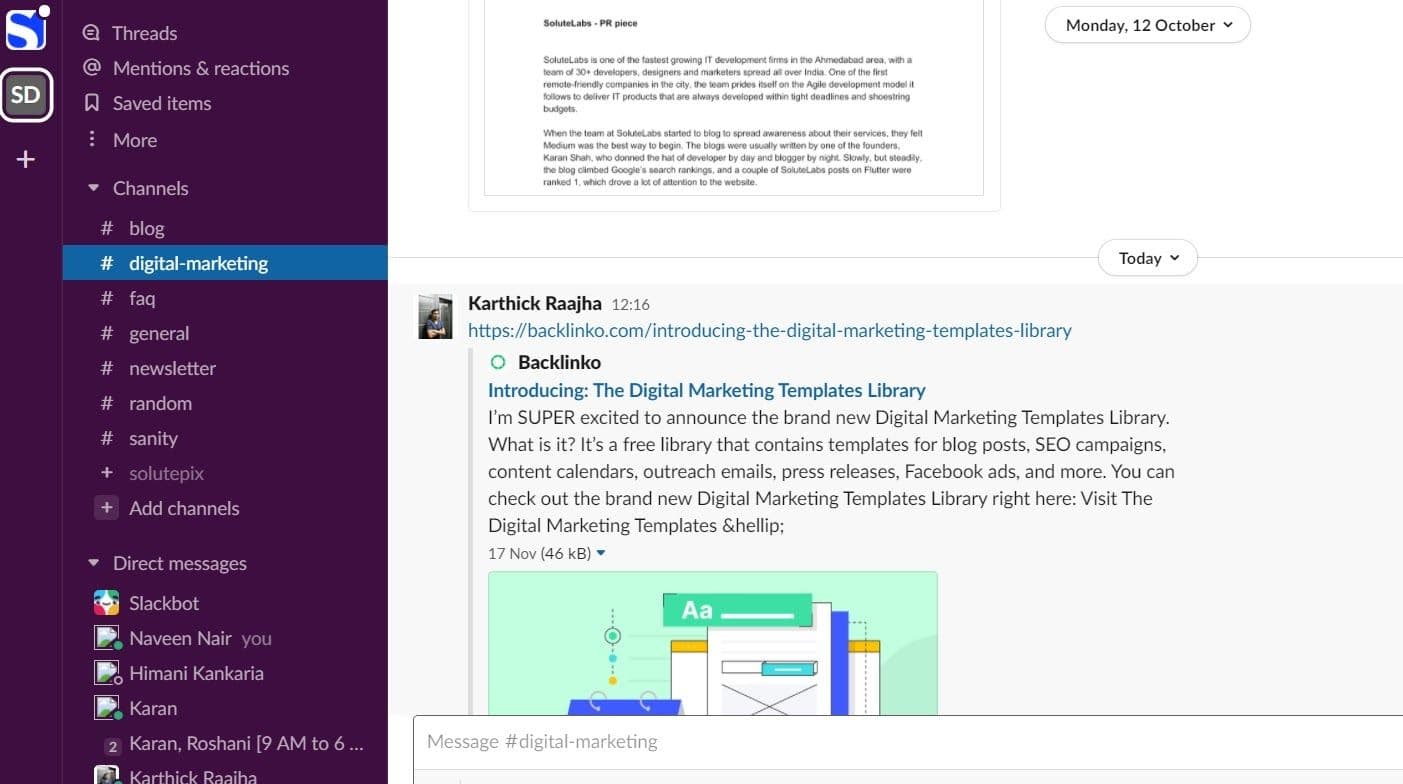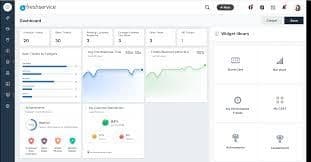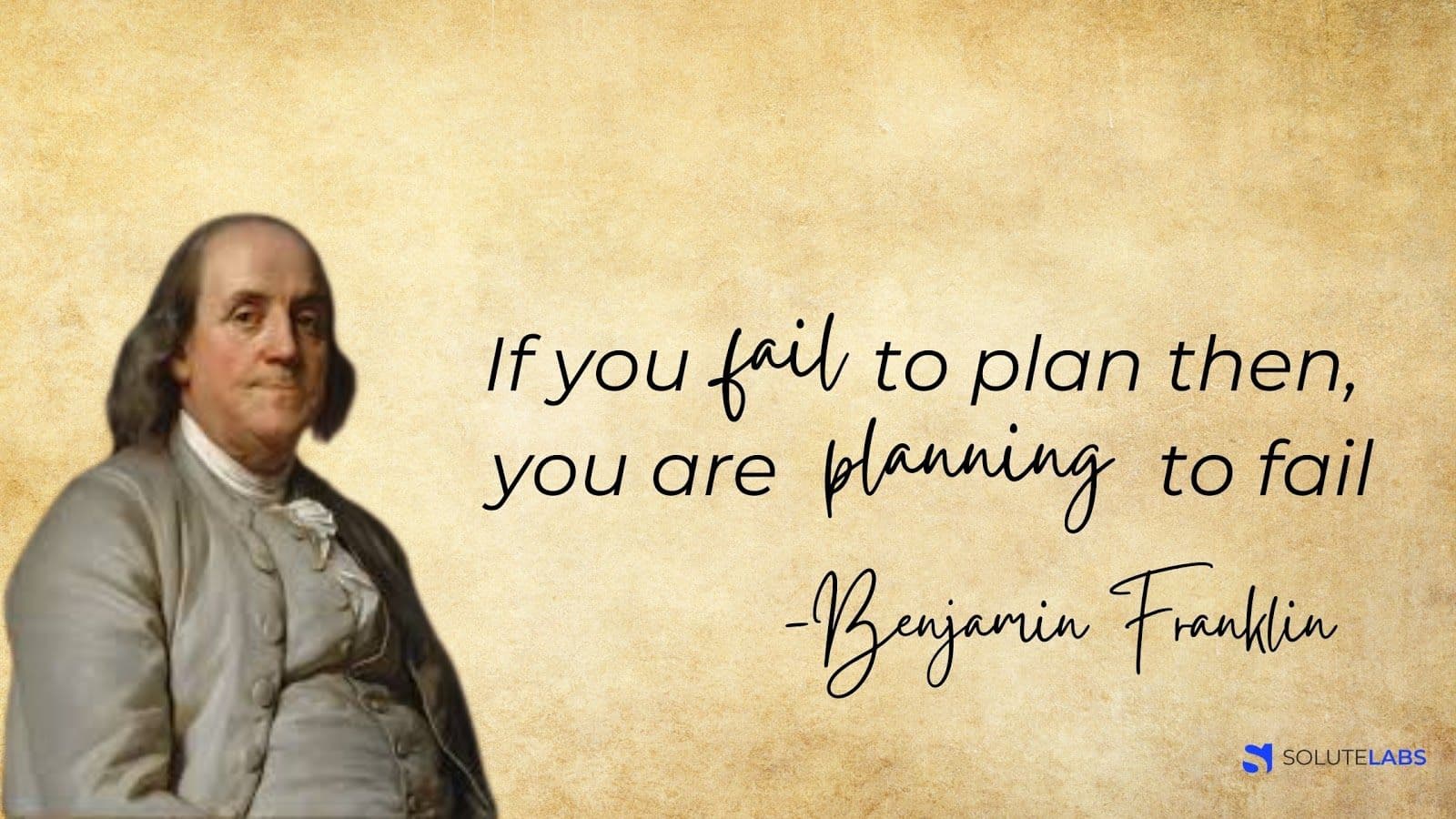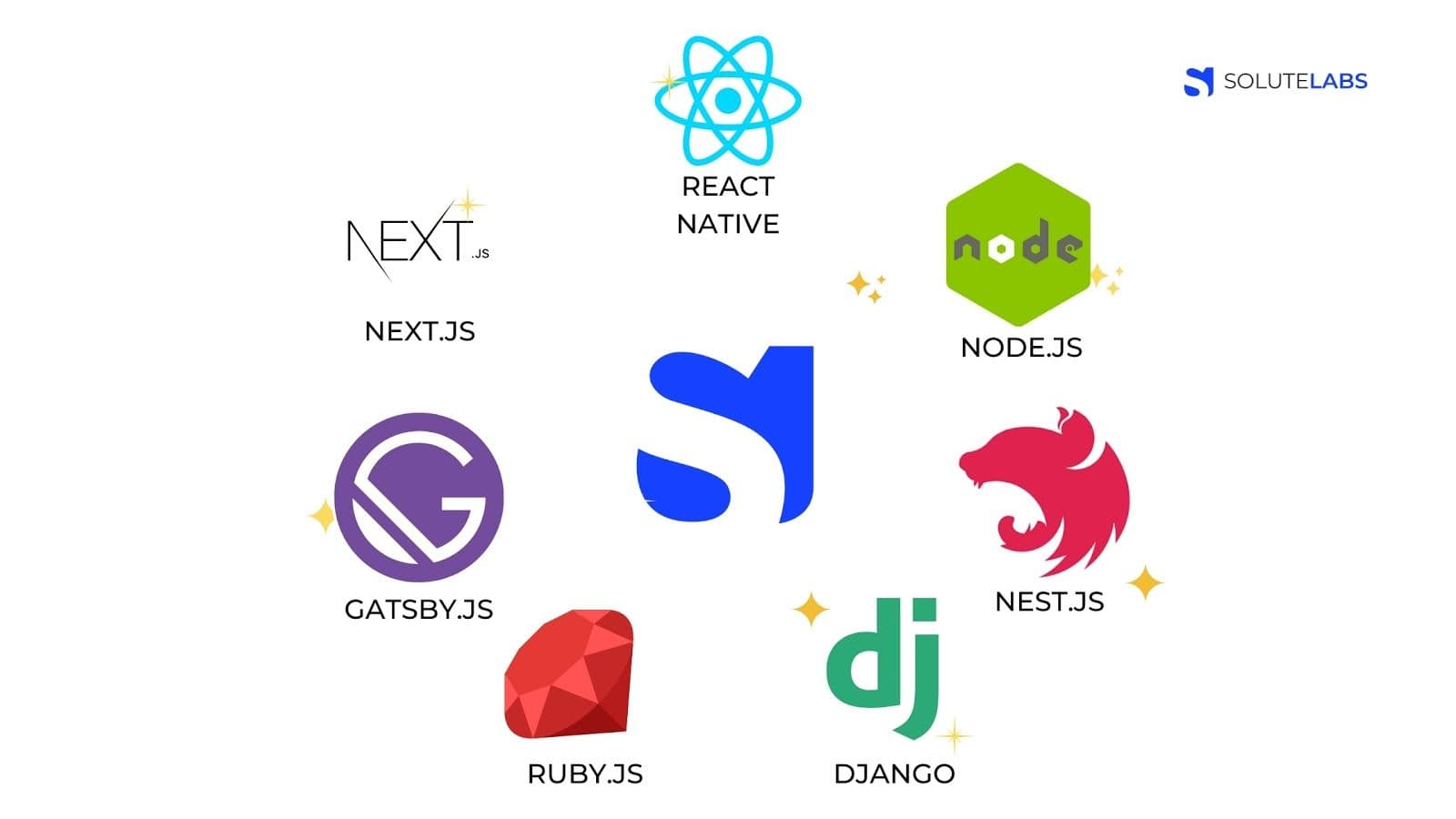The internet, as we know it, has been evolving for a long time and is easily the most significant invention to come out in the last two decades.
The personal computer, Smartphone, Social Media, and AI-powered bots such as chatbots, and today, self-driving cars, all have the internet for helping them succeed.
So what about the Software industry? What happens when you run out of storage space and have a small budget but still want to provide quality service?
Enter SaaS.
What is SaaS
SaaS, or software as a service, refers to using the cloud to deliver software that is licensed, and the users can then pay for it on a subscription basis.
It has been around for close to 40 years now in one form or another, and we take a short trip down memory lane to see how SaaS emerged.
It started big. Real BIG
Computers of the past were massive. They took up entire rooms.
This is an IBM computer from the 1960s.
But universities across the world, especially in the US, were keen on making the most out of this awesome technology.
There was a network of terminals consisting of just a keyboard and a mouse (without a CPU), called dumb terminals, and they used mainframe technology to carry out their computing tasks.
Come the 80s and 90s. Companies like Intel made a leap forward in the microprocessor technology, and Apple and Microsoft gave birth to personal computers that could be used by anybody.
Now we had small organizations and startups that could purchase the hardware for a fraction of the cost compared to the 80s, and the internet penetration meant more and more companies were now moving online.
But the biggest barrier for entry, purchasing licensed software to carry out your day-to-day business, was eluding most of these startups.
This was when a small company called Salesforce came into the scene, with a visionary entrepreneur named Marc Benioff at the top.
And then the Clouds parted — The Salesforce story.
Marc Benioff was your average sales guy in Oracle, but he had a dream.
A dream of providing excellent customer service in the Sales space without needing to be associated with a big name.
So back in 1999, when conventional CRM software ruled the market, Marc decided that it was time to “Think Different.”
So in 1999, Marc started Salesforce in a small apartment in San Francisco.
Fast forward to 2020, Salesforce is today the world’s best CRM solution, and the company itself has a market capitalization of $161.4 billion.
So why bring up this rags to riches story in a piece that was aimed to teach you more about SaaS.
The answer in one word? Cloud.
Salesforce pioneered the way software is delivered over the internet using the cloud, and Software as a Service (SaaS), would not have existed today without a company like Salesforce.
As Salesforce went from strength to strength, other companies realized that delivering software over the internet is an exciting new venue, which led to a slew of companies that copied or tried to copy the Salesforce- model to SaaS success.
Also, read: SaaS Security: A Complete Guide on Issues & Best Practices
Top 5 SaaS companies
1. Hubspot: This is a prime example of a SaaS company that is a leader in the Inbound marketing automation space, with tools focused on Content Management, Web Analytics, and SEO, among others.
Being avid users of Hubspot ourselves, we couldn’t help but be excited using this name on the top of our list. Hubspot hosts its software on the cloud and charges a fee to any user who wants to use any of the myriad solutions it offers.
2. Slack
Another important software that we use every day is a SaaS company that is today valued at more than $4 billion. The company has close to 1.25 million paid users.

Slack used word-of-mouth marketing primarily to drive its early marketing efforts and remains humble even today to attract the young demographic that it resonates with. The number one internal communication tool is a lesson for any marketer on building an affable brand personality and using a killer product to dominate the market.
3. Mailchimp
Mailchimp is an email marketing platform that grew from being an email service for the small businesses in the US to a $400 million behemoth that it is today.
MailChimp’s founder Ben Chestnut used an unconventional method to grow its customer base. They charged a small fee from their users for the first eight years, and after that, started offering a free plan to its customers.
This was taking a sharp U-turn from other Silicon Valley startups bombarding its users with free versions of their software. But with a killer UX and a smooth onboarding process, MailChimp was a success among its users from day one.
4. Zoom
Everyone has been talking about Zoom this past few months, and the pandemic has made its user base zoom (pun intended) to new heights.
Launched in 2013 by Eric Yuan, Zoom is today used by more than 300 million people, who are participants in Zoom meetings at point of time or another. On March 3, 2020, Zoom had 4,84 million daily users, compared to 1.56 million users of Microsoft Teams.
5. Freshservice
The final entrant to our list of top SaaS companies is one from India, a land not just famous for snake charmers and exotic wildlife. Freshservice is the customer service branch of Freshworks, and it offers assistance to customer service execs to carry out their day to day tasks.

Over the past year, Freshdesk has grown at an impressive 78%, and the CEO recently revealed that Freshdesk had hit an Annual Recurring Revenue of more than $100 million. Now that is impressive!!
We have seen some of the best SaaS companies in the market today, so how do you go about building one? Worry not; we are here to help you out. Let us take a look at;
How you can build a great SaaS product from scratch.
Step 1: Study the Market
Just like any other business, SaaS requires you, the CEO, to make a proper case study and gauge if the market is ready for your idea. This is so you don’t waste your precious time and money going down a technical rabbit hole.
Ask yourself a few fundamental questions. Like:
- Who is my potential customer?
- How is my product different from the others in the market?
- If a competing product exists, what is its USP, and how can my product be different from theirs?
- What business model should I adopt to generate an ARR at the earliest?
Once you have these ideas on a whiteboard and have discussed it with the team, it is now time to jot down your vision. It is very important that you have a clear vision of how your product will look like and study where your competitors have failed.
In a race between Wile E Coyote and the Roadrunner, always be the Roadrunner. :P
Step 2: Get your business plan ready.
A road map is essential if you are thinking long term, which we hope you are.
This roadmap will dictate if your SaaS product will make it or break it in the ever-competitive market.
Will you be the next Hubspot, or will you go down in history as Aviato (fictional company from the hit HBO series Silicon Valley)

Here are a few questions you should answer in your business plan.
- What is it that you stand for? What is your company’s USP (Unique Selling Point)? This should be a short answer, preferably in a sentence, where you describe what exactly your SaaS product will do and how you plan to make a dent in the universe. Distill all your ideas so that in the end, you are left with a one-line USP.
- How will you monetize your SaaS product? At the end of the day, any SaaS product is a business, so make sure you have your finances in place before making the leap. Subscription plans, product updates, other income sources should be clearly made out in your business plan.
- How do you advertise to reach your target audience? Your marketing strategy should make its way into your business plan. The channels that you choose to promote your product, Social media, paid partnerships, Content marketing. Etc, all of it should be clearly made available in the plan.
- What pain point is the SaaS product addressing, and how do I solve a particular problem? Again, this is an extension of Question no.1, but it is pertinent that you make your vision as clear as possible.
- What are my funding requirements? Eventually, after you build your SaaS product and begin to scale, you are bound to go for Series A and Series B rounds of funding or go to potential investors and pitch for your product. There is also the exciting avenue of crowdfunding, but your marketing team needs to be on top of their game to pull this off.
Note that these questions are not set in stone, and you may need to modify them from time to time. But make sure you have a plan in place before you make the leap into a SaaS founder.
Which brings us to the next question. Who do I trust with my idea?
Step 3: Build your team.
Football is a competitive sport, and you don’t win unless you play with the best players.
The same holds true for a SaaS product. Whom do you trust to stay with you during the thick and thin, and who do you think will jump ship when things don’t go according to plan?
Building your team with the right task assigned to the right talent is the key to any SaaS startup’s success.
You may be good at writing code but not so good at putting your ideas across. That is the time you bring in your flamboyant roommate who likes to get out there and network to get business.
Remember Microsoft? You know, the company that makes Xbox and who practically built the software- license- for- a- fee industry?
Bill Gates had a lesser-known partner in crime, Paul Allen.
You need a go-to-guy as your co-founder, but it is also important to have the following members in your team:
- Software Developers
- Product Designers
- Business Analysts.
- Testers/ Quality Analysts.
- Marketing / HR / Finance
Building your team by hiring the right people is a crucial step to the SaaS product’s success, and that’s the reason why we have chosen this step above other steps in the article.
Moving on.
Step 4: Build your Minimum Viable Product (MVP)
You know that you have a great product idea in your hands.
You have started hashing out the code, shifting your time between two different screens, and dreaming about days when your product will be used by happy consumers worldwide!!
But hold your horses! You still need to build your Minimum Viable Product (MVP).
An MVP is not a fully-functioning product but rather a concept that can be used by the first few users to validate your idea.
When people see your MVP, they should go, “Wow, I would LOVE TO USE THIS PRODUCT.”
The product should solve the customer’s pain — point, and if they leave the app with a smile of contentment on their face, you have won!
MVPs allow you to collect end-user feedback and allow you to see if customers are willing to spend their hard-earned money on your product.
Once you have your MVP ready, you can move on to the next step — choosing the right tech stack.
Step 5: Choose the right tech stack.
Now to get into the nitty-gritty details of actually building your app. The tech stack used for your app includes the programming languages, different tools, and frameworks that make your application tick.
Without further ado, here is a list of choices or your SaaS product.
a. Frontend: The people at the frontend make sure that everything that you see on the screen is working like a clock. Modern SaaS products use Javascript frameworks to build slick apps that are used by millions of people.
We at SoluteLabs have expertise building products using Javascript frameworks like Gatsby.JS and Next.JS, and you can find the link to one of our blogs here.
b. Backend: While the good people at the frontend are making sure that the consumers get a good first-hand view of the app, the real engineering is happening on the backend. Back-end development ensures that all your requests to and from a server are handled smoothly. Any request the end-user makes to your product should go through smoothly, and the backend team assures that this is done while they remain invisible.
c. SaaS host: This is the actual cloud that we spoke about at the beginning of this article, and can range from Amazon Web Services (AWS) to Heroku, Microsoft, or the granddaddy of them all, Google.
d. Database: Database is where all your secrets (consumer data) are stored, and you need to choose this part of your product with care since consumer data is a delicate matter and should be treated with utmost care. You can use services such as PostgreSQL, NoSQL, or MySQL.

Step 6: Build, Ship, and Support
We have now reached the final stage of building our SaaS product.
You have a crystal clear vision of what you want to achieve.
You have assembled an awesome team to help make your vision a reality.
You have chosen the best technical stack for your SaaS product.
Now is the time for some action, which, in this case, is building the product.
We recommend making a clear development plan and then using the Agile methodology to build the product. This is because we here at SoluteLabs help teams across the world develop world-class products using Agile, using short design sprints.
You can find more info on design sprints in our article here.
Once you build and ship your SaaS product, make sure you provide world-class support so that your early customers become the ambassadors for your product. Word of mouth publicity is the key to the success of any B2B SaaS product, and customer testimonials are worth their weight in gold.
Also, read: SaaS UX Research: All You Need To Know
Conclusion — Parting words
We have shown you the door to building a kick-ass SaaS product. It is now up to you to build on it and start building a product of your own.
Follow our guide and make small tweaks here and there to suit your product development lifecycle.
If you are on the lookout for a team of expert developers who have perfected the agile software development technique, don’t hesitate to give us team SoluteLabs a ring.
















